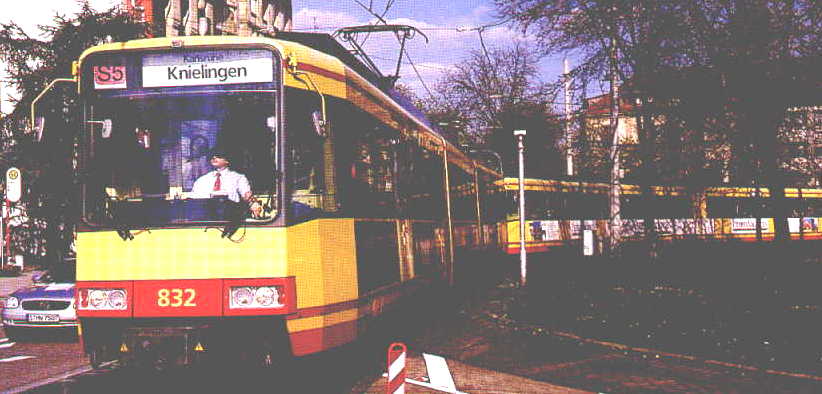
Light Rail Now and Walkable Neighborhoods (LRN) can be contacted at: Light Rail Now! |
Light Rail Lowers Operating Costs Light Rail Progress – January 2001 Particularly for heavier passenger volumes, light rail tends to be much cheaper to operate than comparable bus service – especially per passenger-mile (light rail trips tend to be longer), and often per passenger as well. Light rail costs are lower because vehicles can be coupled in trains, often as long as 4 cars (even longer, on occasion). This means that a single train operator is needed instead of many bus drivers – a significant cost advantage, since operator/driver wages make up about 70% of ongoing operating costs. And there are other advantgaes as well. With entrained vehicles, passengers can be accommodated and moved much more rapidly and efficiently. And, even when the trains operate on public thoroughfares, there's must less conflict with other traffic than there would be if a "platoon" of buses were used instead.Here are some comparative figures from the Federal Transit Administration's 1998 database, for the percent cost differential in light rail service over bus service, both per boarding rider and per passenger-mile (p-m):
· San Diego – 20% less per rider, 55% less per p-m · Sacramento – 14% less per rider, 28% less per p-m · Portland – 4% more per rider, 31% less per p-m · Baltimore – 76% more per rider, 9% less per p-m · Buffalo – 24% less per rider, 10% more per p-m · St. Louis – 47% less per rider, 70% less per p-m It's also widely recognized by both the public as well as planners and decisionmakers that public transit has had to cope with a seemingly inexorable rise in operating costs. However, transit operators and some federal officials are also impressed by the fact that, in many light rail systems, operating costs have actually been dropping, in real terms (constant dollars, adjusted for inflation). Some examples are illustrated in the following graph.
Rev. 2001/01/28
|
|
|
|